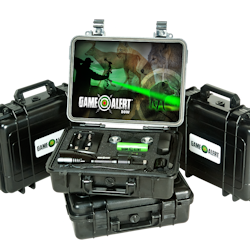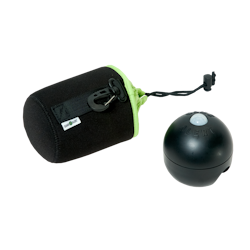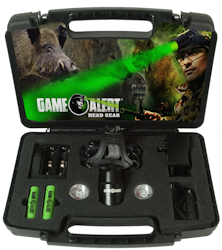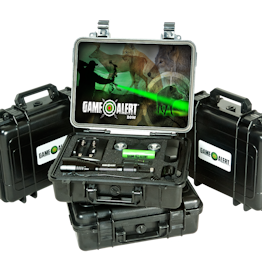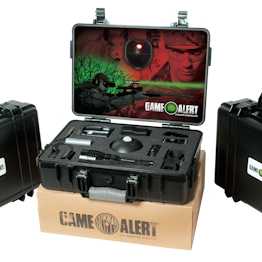Making Sense Of Feral Hog Senses
Swatting flys or taking a 600lb. black bear, once you identify your target your chances of succcess are greatly enhanced if you pocess a base understanding of the strengths/weaknesses of your game.
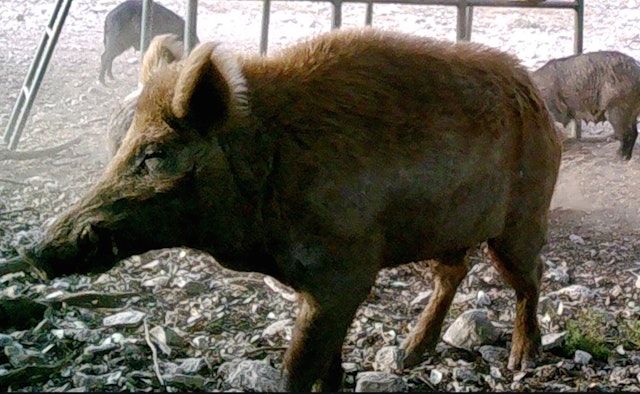
FERAL/WILD HOG SENSE OF SMELL, SIGHT, AND SOUND
Hunting feral hogs is no exception, understanding and thinking like a hog you'll greatly improve your chance of taking that elusive wild boar.
The problem with this educational approach is that there are twice as many myths as there are facts out there regarding the challenges created by the senses of the feral hog.
I will not only stick to facts, I will stick to facts that I have personally field tested and confirmed to be accurate as related to the wild hogs senses, providing all readers with a base understanding of the feral hogs actions. It'll be up to you to apply theses facts to your individual hunting style.
Wild/feral hogs are extremely intelligent animals, like most animals they can also become creatures of habit therefore over time they can be "patterned" as to their movement preferences, feed times, travel patterns etc. if you do not disrupt there senses.
Patterning is only possible if they establish a home-range (wild hog home ranges vary from 4-6 square miles) a home-range will only be established if there is plenty of food, water, escape cover and the area is not subjected to excessive hunting pressure.
Regardless of the establishment of or lack of a home-range feral/wild hogs are movers and they rely heavily on their senses to survive. Rating a feral/wild hogs senses would be 1) SMELL 2) SIGHT 3) HEARING. Lets break these senses down.
SMELL
Wild hogs possess one of if not the strongest highly developed senses of smell of any animal you will hunt, capable of detecting certain odors in excess of 5 miles away. Keep this in mind when you are preparing or traversing to and from your hunting area or stand.
I have tested most cover scents on the market, while some do seem to perform most fail to perform as advertised. I've concluded that no scent is as distracting to a wild hog as the scent of FOOD!
I combat the feral hog sense of smell by insuring a few kernels of dry feed corn drops as I check feeders, feed an area, mount my GAME ALERT® module etc...
This is easily accomplished by simply carrying a pound or two of corn in a bag tied to my pack or belt, cut a small hole in the corner allowing a few kernels to drop out as the bag moves from your actions. The opening should not allow corn to free-flow from the bag, just large enough to release a couple kernels as the bag is jostled about.
I use an old Crown Royal bag it is quiet and has strings to draw closed & easily attach a carabiner to quickly clip to your pack or belt loop.
SIGHT
Wild hogs eyesight is often misunderstood and misstated in hunting blogs and articles.
Second on the priority list of senses wild hog eyesight is best described as marginal as opposed to exceptional. They don't exhibit signs of poor eyesight and they certainly are no where close to blind as some articles will lead you to believe.
Understanding wild hog eyesight will provide some clarity to the myths surrounding tis topic.
Wild hogs prioritize monocular vision, that is using each eye separately as opposed to our priority of binocular vision.
Monocular vision enhances the wild hogs field of vision this improves the ability to locate food and detect immediate danger, this field of vision enhancement comes at the expense of depth perception. it is this lack of depth perception that i believe leads to the near blind myth.
My field experience has proven that wild hogs often detect movement at distances up to 100 yards, not sensing immediate danger this distant movement has little if any impact on their actions.
Feral/wild hogs use of monocular (both eyes independent) results in hogs being very aware of close movement in their field of vision (130 degrees).
Keep this in mind when you are scanning an area with a rifle mounted or hand held green light. Shadows are detected as a potential threat, running a light beam across the body of a hog, a tree, feeder leg etc. will cast a shadow, often times alerting one or more of the hogs in the group, they will become skiddish and possibly leave the feed area.
Minimize shadows to improve night hunting success rates.
HEARING
Hearing is the least developed of the wild hogs senses. You should maintain a degree of awareness of making unnecessary sudden loud noises when hog hunting.
In field tests I have intentionally made noises to alert the hogs at a feeder, they typically acknowledge but tolerate the common noises (movements, rustling of brush, shuffling of rocks etc.) for a period of time, if the noise persists they will move on. Feral/wild hogs hearing is keen enough to detect a fairly loud whisper @ around 100 yards, human voice above a whisper and they are GONE.
In summary take steps to minimize scent spreading in the hunting area. Eliminate/minimize shadowing when night hunting and exercise awareness re: sound generation.
These tips applied on your wild/feral hog hunt will improve your chance at landing that elusive wild boar!
-- Good Luck, Be safe, HOGMAN


